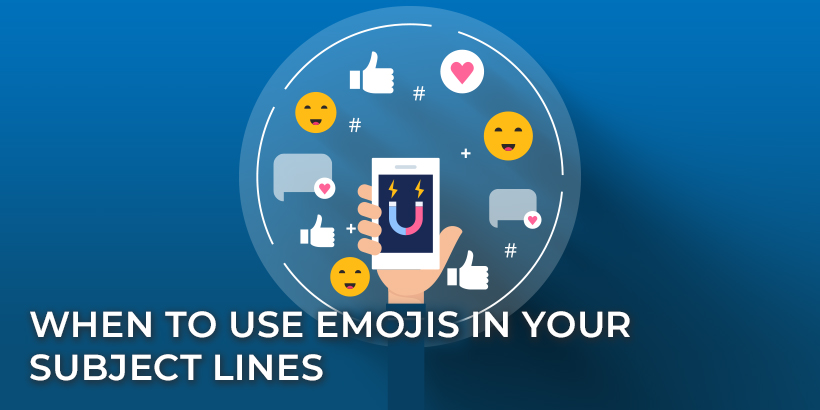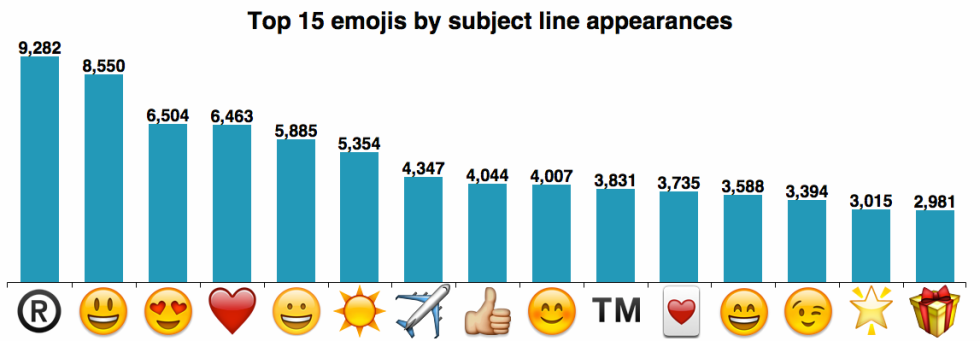
Over the last few years, you’ve probably noticed an emoji or two in your inbox. Some brands use them all the time. But for most organizations, if they use emojis at all, they’re a rare treat.
Still, it’s become increasingly popular to use emojis in email subject lines, and some brands assert that emojis are the key to their high email open rates. (You’ll have to test that with your own audience.) But regardless of whether or not emojis have a dramatic impact on your open rates, they do have some advantages over plain-text subject lines.
If you’ve ever wondered if and when you should use them, here are four instances where you should consider testing them.
1. When you want your message to stand out
While emojis have become more popular, they’re still fairly uncommon. Using them makes your subject line stand out from all the text-only messages in someone’s inbox. And since your audience, like everyone else, is constantly bombarded with emails, emojis can be the key to ensuring people don’t just scroll past your subject line.
Over time, emojis could even become associated with your email newsletter. If you consistently sent quality emails that people want to open, those emojis help them quickly recognize that they have another email from you—their favorite brand.
And since there are hundreds of emojis to choose from, it’s pretty easy to find one that helps capture your brand. Here are the most popular emojis brands use in subject lines, according to MailChimp:

2. When you don’t have enough room for words
You can only fit so many characters in a subject line. Use too many, and your subject line may as well say “No Subject,” because email clients will cut it off and your audience won’t be able to read it all. These limitations force you to get creative and find the fastest ways to communicate your main idea.
And that’s where emojis come in. With a single, easily-recognizable character, you can communicate an entire word or concept. These pictures may not say 1,000 words, but they can help you convey bigger ideas and communicate longer messages in the same space.
3. When you want to evoke emotion
Many of the most popular emojis are variations of smileys. They’re literally facial expressions that communicate a specific emotion. They shape how people feel about your subject line and the content of your email, and can be used to impart the subject line’s tone.
Emotions can affect our buying decisions, and they can also affect our decision to open or ignore an email in our inbox.
Emojis don’t have to replace words to convey emotion, either. You could place one at the start or end of an otherwise ordinary subject line to change how people feel about them, similar to punctuation like an exclamation mark.
4. When you have an unusual announcement
Like all things, emojis can become less effective if they’re overused. So unless you intend to make emojis a fixture of your brand, it’s wise to use them sparingly, when you want a particular message to get some extra attention. Or, you could reserve them for a specific type of email, such as your biggest sales, so that seeing the emoji becomes a signal: this is another chance to get one of those awesome deals.
Why not try them?
As with all things, emojis are something every brand has to test for themselves. Your audience, your niche, and even your individual email list are unique ecosystems where someone else’s successes or failures often have little bearing.
So if you feel like emojis fit with your brand voice and you find yourself in one of the situations above, why not test one out?